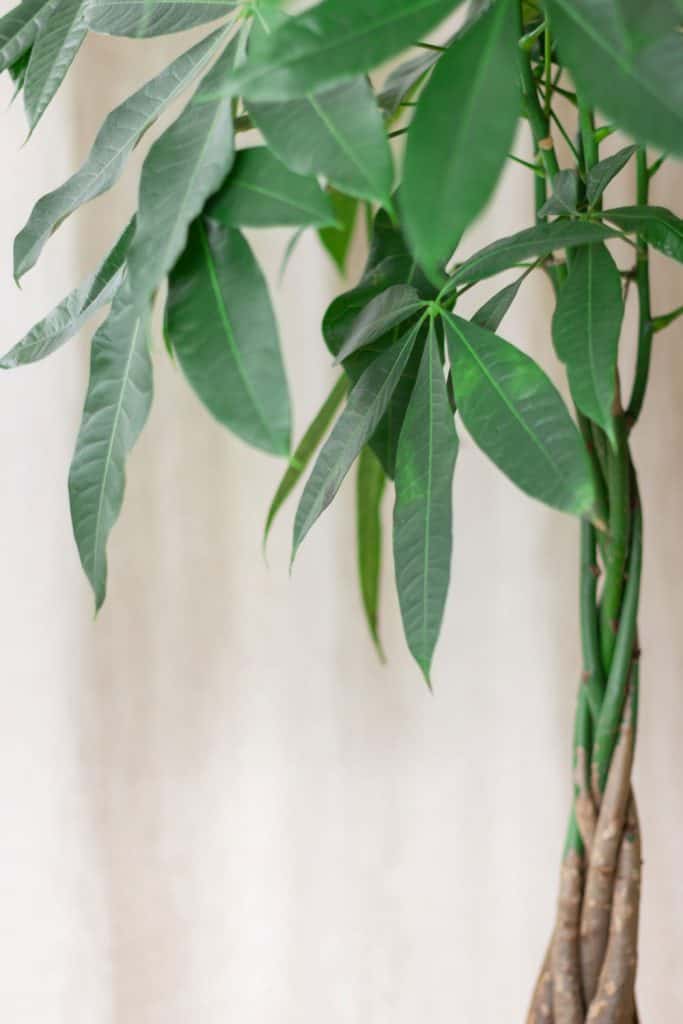Money trees are gorgeous indoor trees that are known to bring prosperity and luck. Properly caring for and maintaining your money tree can ensure that it will last and grow for several years. One important aspect of maintaining the tree is proper watering. But how often should money trees be watered? We've done a bit of digging to find the answer for you.
Unlike many other indoor plants, money trees don't need to be watered every day, but they will need regular watering. The best watering routine for your tree is to water it when the top 2 to 4 inches of its soil becomes dry. On average, you may need to water your money tree anywhere from 1 to 2 times a week. To water the tree, pour the water into the soil until it begins to drip out the bottom of the pot from the drainage holes.
In this guide, we'll cover various techniques to ensure that your money tree is sufficiently watered and happy. We'll also discuss what an overwatered and underwatered money tree looks like, what it means when its leaves droop, and more. So be sure to keep reading.

Methods To Water Your Money Tree

First, it's important to know that over- or under-watering your money tree can be absolutely detrimental to its health. So when you first purchase your plant, it's important to monitor the moisture level in the soil for the first few days and weeks to determine how often it will need to be watered.
If you are someone who takes frequent trips away from home or tends to forget to water your indoor house plants, there are ways that you can keep your water money tree sufficiently hydrated without having to manually water it every time. Let's discuss some of the most popular automated watering strategies.
Plant Watering Globes
Plant watering globes are tube-shaped devices, typically made from glass, ceramic, or plastic, that can be inserted into the soil of your money tree plant to provide it with automated watering. They work pretty much like water spikes, except they're a bit bigger and have a bulb on the end. The great thing about these globes is that they distribute the water very slowly and do so on an as-needed basis.
You may want to exercise a bit of caution when purchasing the ceramic models, as their porous surface will release water into the pot when the moisture within the pot diminishes. These spikes typically come in a variety of colors and shapes. These globes can typically water the plants for up to one to two weeks and don't require much maintenance--you simply remove them to refill them with water.
Check out these plant watering globes on Amazon.
Terra-Sorb & Mulch
Another option you have if you are someone who travels often is to use Terra-Sorb or another soil-based hydration material for your plant. Terra-Sorb works by extending the amount of time that the plant's soil stays wet. It contains crystals that absorb over 150 times their weight and they slowly release water into the soil as it begins to dry out.
Mulch is also a material that you can add to your soil to help extend the amount of time that it stays moist. Simply add a layer of it to the top of your plant's soil for it to slow down the evaporation of water from the soil. Both Terra-Sorb and mulch can help your money tree stay hydrated for about up to a week.
Check out this Terra-Sorb on Amazon.
Drip System
One of the easiest watering systems that you can create for your money tree is the classic drip system. To set this up, you'll need a plastic water bottle (and cap) as well as a drill (you can also use a hammer with a nail). Start by taking the empty water bottle and use the drill to create a small hole in the bottlecap. After you have placed a small hole in the bottle cap, fill the bottle with water and place the cap back on it.
Next, flip the bottle over and place it in the soil. Try to place the cap of the bottle about three to four inches in the soil so that it doesn't fall out. Be careful where you place the bottle as you don't want to damage any of the plant's roots. The side of the pot will probably be best. As the soil becomes drier, it will be rehydrated from the water being released from the bottle.
You can also use a wine bottle to create a drip system. Be mindful that the size of your drill bit or nail will determine the size of the hole in the bottle cap, and subsequently the amount of water released into the soil. If you are concerned about over-watering, you can also place a spike inside the bottle to help control the frequency.
Plastic Bag
You can also keep your money tree plant hydrated by simply using a clear plastic bag. Turkey bags or clear grocery bags are great for this type of watering system. The bag will need to be large enough to cover the length of the plant as well as the pot. Next, set the plant on a surface that's at least four feet high, such as a counter or table.
Then, place the bag over the plant in the pot. Next, blow air into the bag similarly to how you would a balloon. Then gather the bag in one hand to quickly trap the blowing air inside and then tie the bag to seal in the air. You can use a zip tie, wire, or string to tie the bag.
Once you're finished, it's important that you not place the plastic-covered plant under direct sunlight (or anywhere near it), as it will cause your plant to overheat. This method rehydrates the plant automatically when the water that evaporates from the soil forms as condensation on the plastic and then runs down the bag to be reabsorbed by the soil.
Self-Watering Pots
Self-watering pots are also a good option to make watering your plant a bit easier. These pots utilize capillary action to release water from a reservoir that is built within the pot. This allows you to water plants by simply replenishing the reservoir. The benefit is that you don't have to continuously monitor the moisture level of the plant's soil.
Check out this self-watering pot on Amazon.
Wicking System
Another simple self-watering system that you can use is a wicking system. To create this, you'll need a medium-sized container to hold the water for your money tree plant (it should be able to hold at least a pint or two of water) as well as any type of wicking material (aka "wicking cord").
Take note that the wicking cord will need to be about 12 to 14 inches, as it needs to be long enough to cover the length of your watering container and to reach at least two to three inches down inside the plant's soil.
Materials that can work as a great wicking cord include twine, yarn, nylon rope, or a really thin piece of cotton fabric that's been cut from a garment. Make sure to measure the length of your water container before cutting the cords and setting up your wick system.
Once you cut your cord, place one end about 2 to 3 inches in the soil and place the other end inside the water container. It should reach the bottom of the container.
Check out this wick cord on Amazon.
How Do You Know If Your Money Tree Needs Water?
A few common signs that your money tree needs water include leaves that are turning brown or yellow, dry soil that pulls away from the size of the plant pot (the tree's soil should never look parched), and stunted growth. Also, if you notice your plant's leaves are becoming wilted or wrinkled, this could be a big sign that you are under-watering your plants and that you'll need to increase the frequency with which you water it.
It's important that you not over-water the plant when trying to replenish it. Simply add water to the soil until it lightly drips from the saucer, and then pour out any standing water once it settles (and then monitor it).
What Does An Overwatered Money Tree Look Like?
When a money tree is overwatered, the biggest sign is the drooping of its leaves. Another common sign is the yellowing or browning of its leaves. It's important to note that during the winter months, a money tree doesn't require as much water as it will in the warmer months, as it typically grows less in the winter. It's during this time that you will want to pay special attention to the moisture level of the soil to avoid over-watering.
Why Are Your Money Tree Leaves Drooping?
If your money tree leaves are drooping, it may be due to overwatering. This is actually the most common reason why the leaves will droop, as they're literally filled with water. You must never let your money tree's roots sit in standing water. Money trees don't require a lot of water to stay healthy. If they are overwatered, they can also develop root rot. This can cause several new issues.
If your plant's leaves are drooping, simply fall back on the watering a bit to allow the plant some time to recover. During this time, monitor the moisture of the soil every other day. Let it dry out just a bit before you water it again.
What Does It Mean If Your Plant Leaves Are Dropping?
Leaves dropping from your money tree can be a sign that trouble is afoot and that your plant is in ill health, as this is a sign of stress. There are quite a few issues that may cause the leaves to drop, including:
- Improper Watering
- Temperature/Humidity Stress
- Plant Disease
- Pest Infestation
- Plant Shock/Bad Transplant Acclimation
To begin reviving your plant, it's best to first determine the cause of distress so that you can begin mitigating it.
Wrapping Things Up
Money trees can be a bit tricky to care for initially. However, constant monitoring for the first few weeks can help you learn your plant and better understand what it requires for optimum health.
Interested in learning more about money trees? If so, be sure to check out our other posts before you go:




